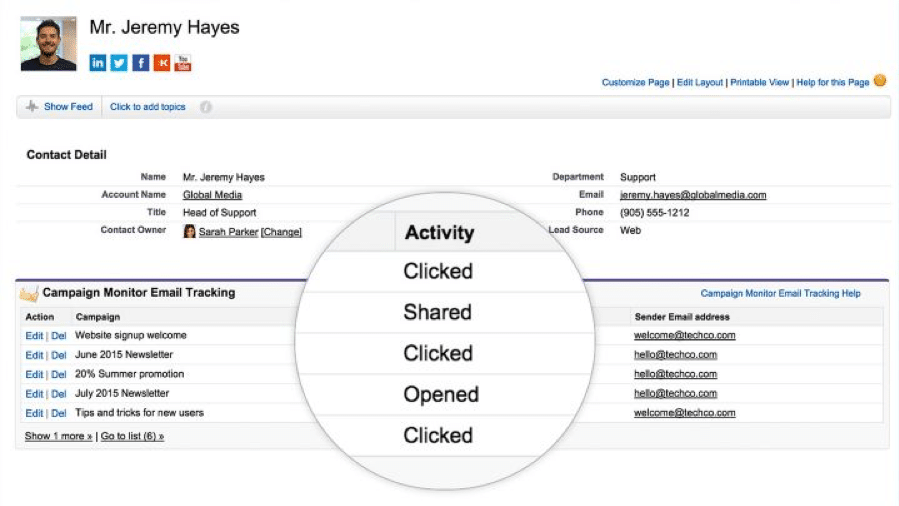8 Lead Nurturing Steps to Follow for a Successful Campaign
Lead nurturing is a highly effective way to generate more sales for your business. When you combine lead nurturing with marketing automation, your results can be even better.
For digital marketers, a step-by-step lead nurturing process can turn a haphazard effort at lead generation into a well-oiled digital marketing machine.
What is lead nurturing and how can it improve sales?
Lead nurturing is a way to cultivate and build relationships with leads in order to encourage conversions.
Far too often, a business might be generating a substantial number of leads, but then it fails to follow through with them. Those leads just languish. Instead of being converted into sales and customers, the leads are left as missed opportunities.

Those are leads: prospective consumers.
In your campaign strategy, we have described the lead nurturing phases below.
This procedure implies that you will use email for lead nurturing. You may discover that you need more or fewer procedures for your specific company requirements. But here’s a good place to start:
1. Determine your sales cycle timetable
How long does it usually take for a lead to turn into a sale?
For example, if your sales cycle is normally one month from first contact to closure, you might develop a lead nurturing schedule in which you contact your leads once a week for four weeks.
Takeaway: Once you begin running your lead nurturing efforts, adjust your timing depending on real testing.
2. Establish explicit objectives for your lead nurturing programs
How many leads can you convert in a reasonable amount of time? Do you want to set a target to produce more leads once you’ve established your nurturing process?
For instance, suppose you’re marketing a new online course. You establish a monthly objective of bringing in 20 new pupils.
Takeaway: Your objectives should be both reasonable and quantifiable.
3. Create a database for lead nurturing, an email list, and a CRM system.
Your leads must be stored in some kind of database or system. Your system should ideally feature the ability to send email newsletters and participate in drip marketing.
For example, you may combine your email list with Salesforce CRM using Campaign Monitor, giving you the best of both worlds.
Takeaway: Ensure that any automatic lead generating technologies you use to add users to your database are opt-in.

4. Select some valuable information to give your prospects
When you engage in lead nurturing, you are not attempting to seal the transaction (just yet). You’re establishing a connection with the consumer. As a result, you must provide them with material and information that they may find useful, with no strings attached.
For example, if you were offering an online course, you might provide some free course-related content without actively marketing the course. When your final objective is to offer a full online ukulele course, “three free ukulele lessons” provided through email is an example of what to give.
Takeaway: The bottom line is that your material should not be a sales pitch.
5. Send this information to your prospects in accordance with your timeframe
Remember, we’re not sending out obvious sales pitches at this point of the game. You will now begin your drip email campaign by distributing your material according to the timetable you established in step 1.
Every example, for three weeks, you would send out a new free ukulele lesson. After you’ve completed the lead nurturing process, you can send a final email to clinch the sale and give your prospects a special discount on your entire online ukulele course.
Takeaway: To automate this process, use email list management software like Campaign Monitor.
6. Track and measure outcomes
All drip marketing programs should be monitored and assessed. How successful were they in persuading your prospects to convert? Were some emails more successful than others?
For example, you may track and monitor how many individuals opened the emails using the free online ukulele lessons. If you discover that individuals began with the first lesson but dropped out before lesson three, you may need to modify your campaign to keep people engaged.
Takeaway: Ensure that you monitor more than just final sales. Examine each stage of your campaign.
Once you have these tools in place, all you need to do is develop some amazing content to send to your prospects.
Conclusion
Finally, to summarize:
- Determine your sales cycle timetable.
- Set precise objectives for your lead nurturing initiatives.
- Create a database for lead nurturing, an email list, and a CRM system.
- Define your target audience and categorize it using personas.
- Choose some valuable information to give your prospects.
- Following your timeframe, email this material to your prospects.
- Results must be measured and tracked.
- Reassess and adapt depending on the findings.
You can build, implement, and manage extremely successful drip marketing and lead nurturing programs utilizing email automation and the correct tracking tools.






Recent Comments